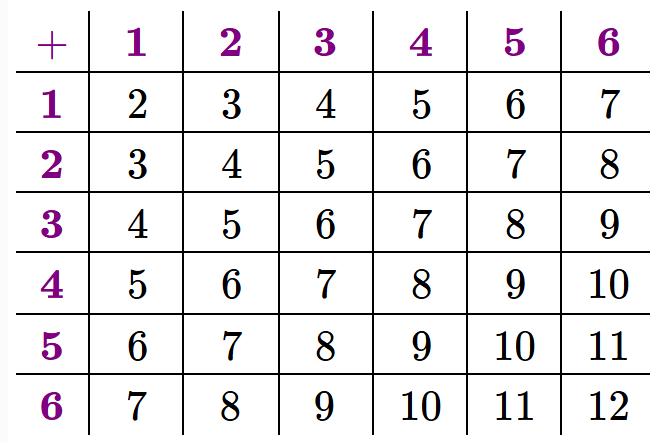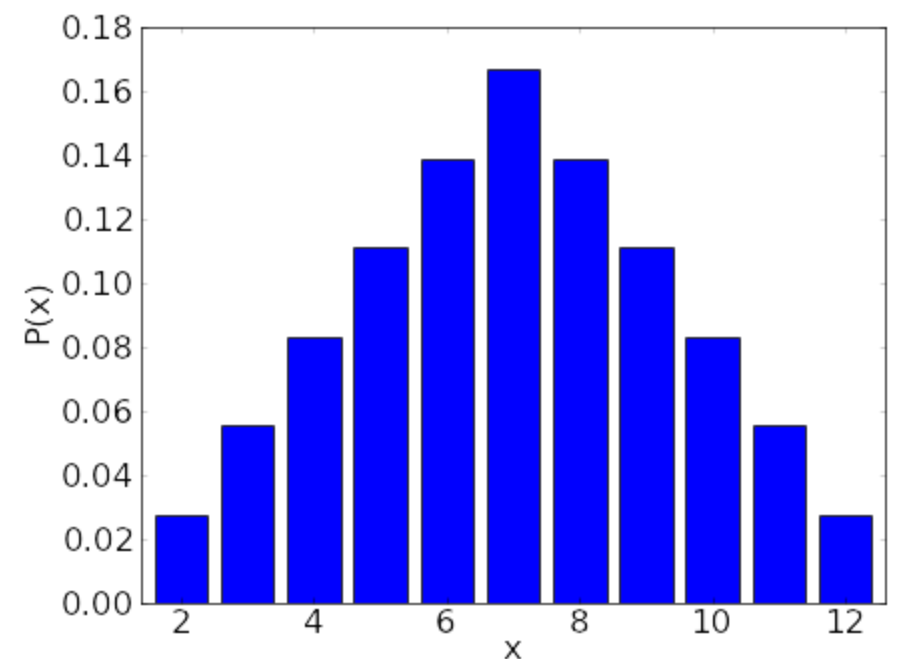PDF and CDF: Roll 2 dice
Roll two dice colored red and green. Let
- Find the PMFs of
and of and of . - Find the CDF of
. - Find
.
Solution
(1) Sample space.
Denote outcomes with ordered pairs of numbers
Require that
Events are sets of distinct such pairs.
(2) Create chart of outcomes.
Chart:

(3) Definitions of
We have
Therefore
(4) Find PMF of
Use variable
Find
Therefore
(5) Find PMF of
Same as for
(6) Find PMF of
Find
Count outcomes along diagonal lines in the chart.
Create table of

Create bar chart of

Evaluate:
(7) Find CDF of
CDF definition:
Apply definition: add new PMF value at each increment:
PMF for total heads count; binomial expansion of 1
A fair coin is flipped
Let
The PMF of
Since the total probability must add to 1, we know this formula must hold:
Is this equation really true?
There is another way to view this equation: it is the binomial expansion
Life insurance payouts
A life insurance company has two clients,
Define a random variable